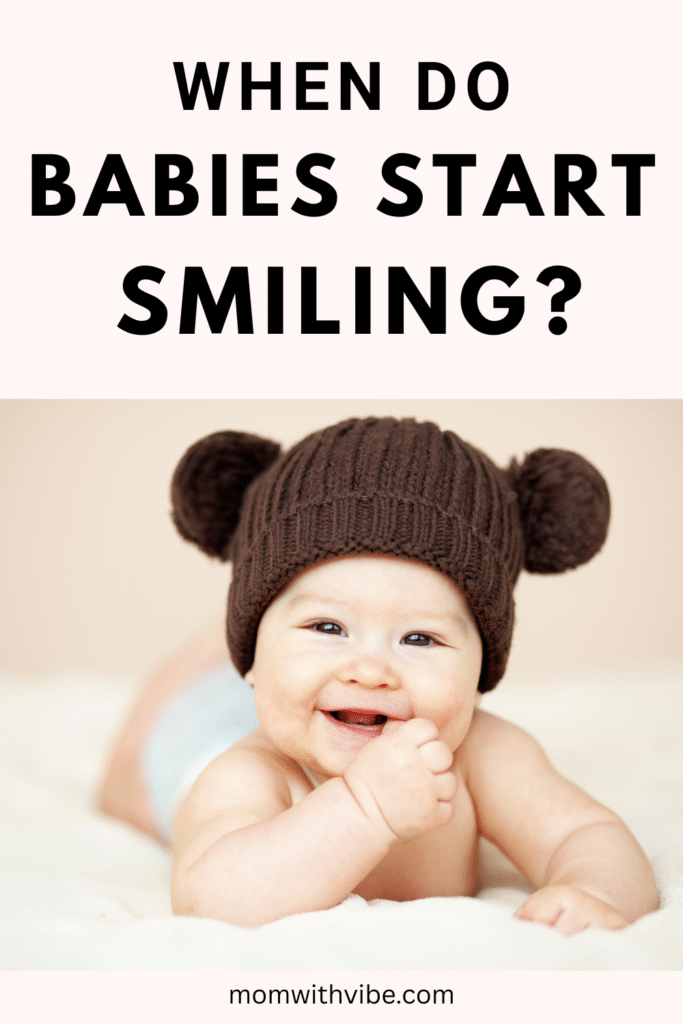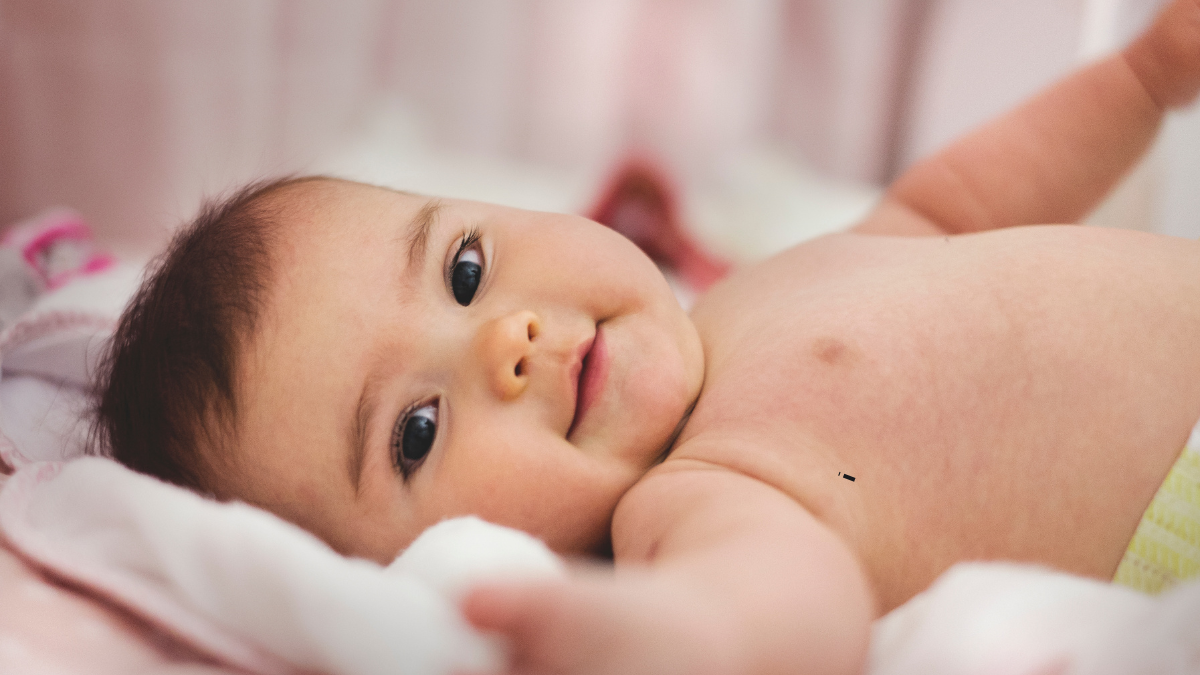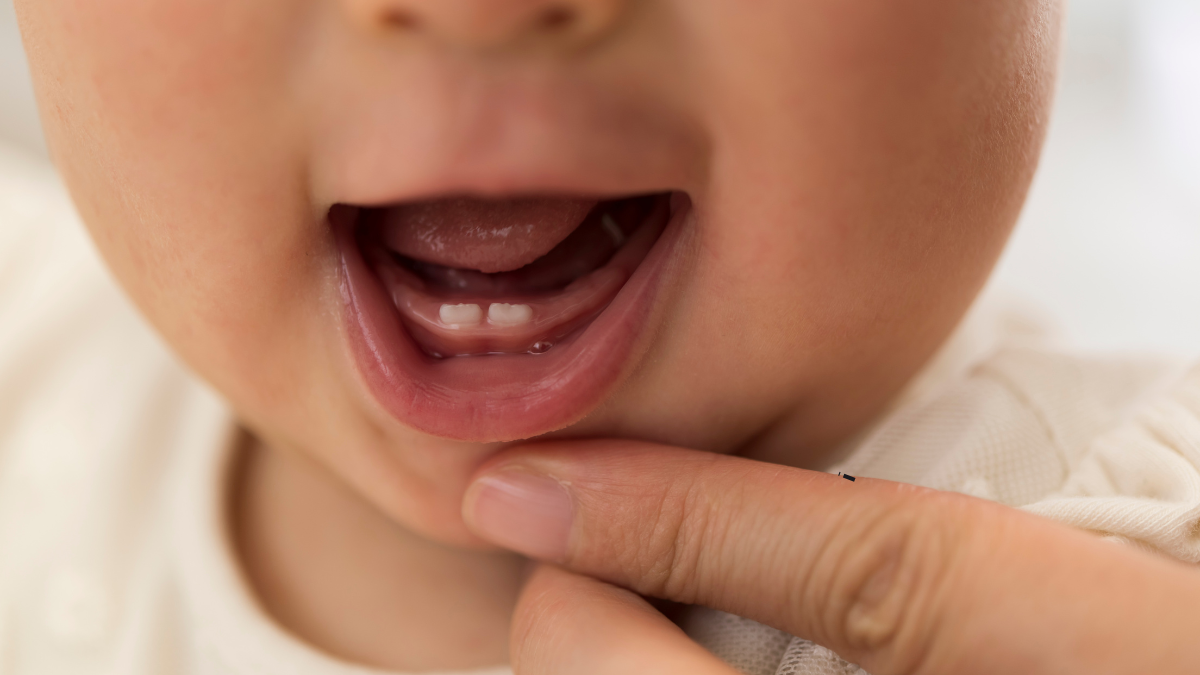One of the most touching moments in the world of a parent is the sight of their baby’s smile. It’s not just a cute gesture—it’s an important developmental milestone that many parents eagerly anticipate. A baby’s smile marks the beginning of their emotional growth, and it signifies their ability to connect with their caregivers. But when do babies start smiling? What does it mean when they smile? In this article, we’ll explore the different phases of smile development in babies, its significance, and how to encourage your baby to smile.
The Science of Smiling in Infants
A baby’s smile is not merely a way of being cute—it plays a crucial role in their emotional and social development. From the moment a baby is born, they begin interacting with their caregivers and the environment. Smiling is one of the first signs of this interaction.
However, not all smiles are created equal. Babies experience different types of smiles as they grow. Understanding these stages is important for parents to recognize how their child is progressing socially and emotionally.
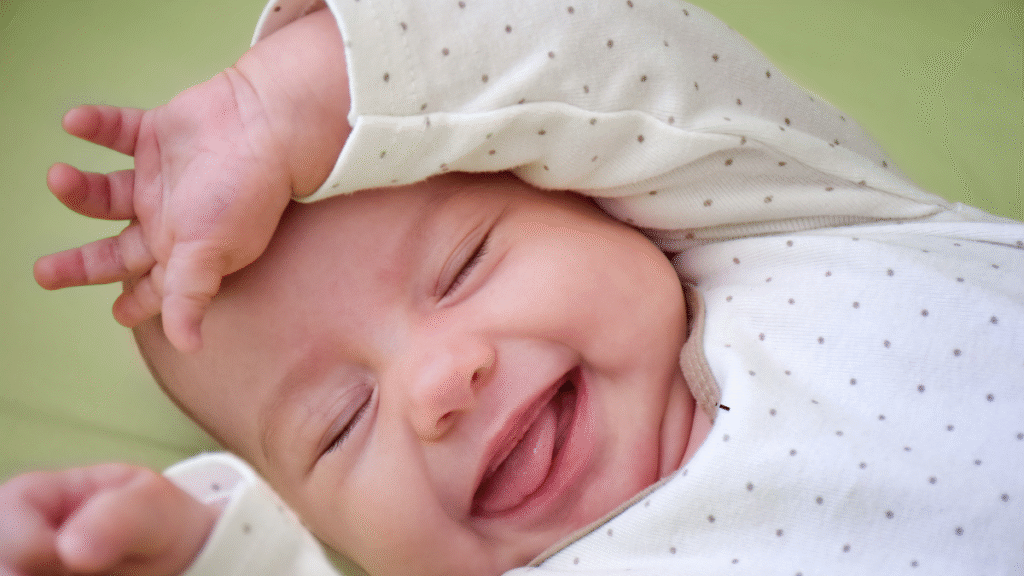
Reflexive Smiling: The First Smile
The initial smiles a baby shows are reflexive, not volitional. These smiles occur during the early weeks of life and are considered normal newborn behavior. Reflexive smiles aren’t a response to any external stimulus; they are simply a sign that the baby’s nervous system is developing.
When do babies smile reflexively?
A baby typically starts displaying reflexive smiles between 6 to 8 weeks. These smiles are often seen when the baby is sleeping or relaxed. Importantly, these smiles are not intentional—they are an indication of the baby’s brain and facial muscles beginning to develop.
Related: How to Make Your Baby Fart
The Social Smile: The Beginning of Social Interaction
Around the same time, between 6 to 8 weeks, babies begin developing the ability to respond to stimuli in their environment. This is when the actual social smile begins. The social smile is significant because it marks the baby’s first meaningful interaction with the people around them.
At this stage, babies start smiling in response to familiar faces, especially those of their parents and caregivers. The social smile shows that the baby is starting to recognize and engage with people, marking a major milestone in their emotional development.
What triggers a social smile?
Social smiles often occur in response to things that make a baby feel secure or comfortable, such as:
- The sight of a parent or caregiver’s face
- The sound of a familiar voice
- Familiar smells, such as the scent of their parent or favorite blanket
The social smile is one of the first signs of emotional development, as it shows that the baby is beginning to connect with others on an emotional level.
Related: 10 Ways to Train Your Baby to Sit
Developing the Ability to Smile in Various Situations
As babies grow, their ability to smile in different situations and in response to a wider range of stimuli improves. By 3 to 4 months, babies begin smiling more intentionally. They may smile when they engage in playful interactions, such as games or sounds that they find amusing.
For example, when a parent or caregiver makes a silly face or plays peek-a-boo, the baby may smile or laugh. At this age, babies realize that their smiles elicit responses from others, and they begin using smiles as a way to interact and communicate.
What does a baby’s smile communicate?
A baby’s smile can serve several purposes:
- Bonding: Smiling helps a baby bond with their caregivers and strengthens their emotional connection.
- Enjoyment: Babies smile when they enjoy something, like a game or a song.
- Recognition: Smiling also indicates that a baby recognizes familiar faces and objects.
Related: How to Help Your Baby Turn Head Down
The Role of Developmental Milestones in Smiling
The timing of a baby’s first smile can vary, but it is generally linked to their overall developmental milestones. Smiling is a key indicator of emotional and social growth, which is usually influenced by several factors:
- Vision Development: As a baby’s vision improves, they become more aware of their environment and the people around them. This helps them recognize faces and respond with smiles.
- Brain Development: The development of the brain in the early months is crucial for a baby to process social cues and express emotions like smiling.
- Motor Skills: Babies need to develop control over their facial muscles to smile in a coordinated way. This typically happens around 6 to 8 weeks, which is when purposeful smiles begin.
- Emotional Awareness: As babies grow, they experience a wider range of emotions, and their ability to express these emotions through facial expressions, including smiling, improves.
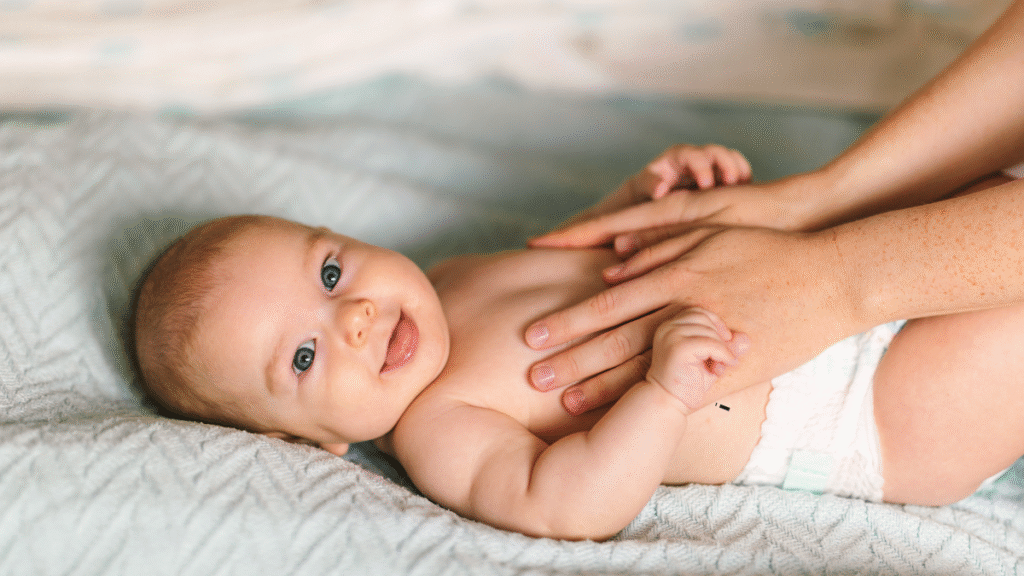
What Makes a Baby Smile?
There are many reasons why babies smile, and each smile can have different meanings depending on the situation. Some common things that make babies smile include:
- Recognizing Familiar Faces: As babies begin to recognize their caregivers, they will often smile when they see them. This is one of the most heartwarming moments for parents, as it signals that the baby is starting to form emotional attachments.
- Soothing Words or Actions: Babies often smile when they hear soothing sounds, such as a loved one’s voice or a familiar lullaby. They may also smile when they are rocked gently or held comfortably.
- Social Interaction: Babies are often triggered to smile during interactions, such as playing games like peek-a-boo, making silly faces, or playing with toys. At this stage, babies learn that their behavior can elicit responses from others, and they may smile to encourage attention or interaction.
- Physical Comfort: Babies also smile when they are physically comfortable. Smiles often occur when babies are fed, held, or resting. Physical comfort is one of the key reasons why babies smile during the early stages of their development.
How to Encourage Your Baby to Smile
There are several ways to encourage your baby to smile. Here are some tips:
- Face-to-Face Interaction: Babies are drawn to faces. Make eye contact with your baby, smile, and engage with them. This helps them feel secure and promotes social smiling.
- Talk and Sing to Your Baby: The sound of your voice can be incredibly comforting to your baby. Try talking to them softly or singing to them. This can trigger a smile, especially if they recognize your voice.
- Play Games: Games like peek-a-boo or making funny faces are great ways to encourage your baby to smile. These games also help babies learn about cause and effect.
- Provide Positive Reinforcement: When your baby smiles, respond with excitement. Clap your hands, smile back, or use words of encouragement. This helps reinforce the idea that smiling is a positive interaction.
- Be Patient: Every baby develops at their own pace. Some babies may take longer than others to start smiling. Be patient and continue engaging with them lovingly.
When Should You Be Concerned?
While smiling is a key milestone, some parents may wonder if their baby is developing normally if they don’t smile on schedule. It’s important to remember that every baby develops at their own pace. However, if a baby reaches 3 to 4 months without smiling, it could be an indication of a developmental issue, such as a delay in social development.
If you’re concerned that your baby is not smiling or showing signs of developmental delay, it’s always a good idea to consult with your pediatrician. They can assess your baby’s overall development and provide guidance or refer you to specialists if necessary.
FAQ: When Do Babies Start Smiling?
1. When do babies start smiling?
Babies typically begin reflexive smiling between 6 to 8 weeks. Social smiles, where they smile in response to familiar faces or voices, often develop around the same time.
2. How do babies start smiling?
A baby’s first smile is usually reflexive and is not triggered by any external stimulus. As they develop their vision and brain function, they begin smiling in response to familiar faces, voices, and social interactions.
3. How can I make my baby smile?
Encourage your baby to smile by making eye contact, speaking to them in a soothing voice, playing games like peek-a-boo, and responding with excitement when they smile.
4. What if my baby doesn’t start smiling at 3 months? Should I be concerned?
Most babies start smiling by 6 to 8 weeks, but if your baby is not smiling by 3 to 4 months, it may be a sign of developmental delay. It’s best to consult with your pediatrician for guidance.
5. Do all babies smile at the same age?
No, every baby develops at their own pace. Some babies may smile earlier or later than others, and that’s completely normal. However, if you have concerns, it’s always good to speak with your pediatrician.
Conclusion
A baby’s smile is more than just a cute expression—it’s a sign of their emotional and social development. Whether it’s the reflexive smiles of a newborn or the social smiles that appear around 6 to 8 weeks, each smile represents a step forward in your baby’s growth. By interacting with your baby and creating a loving and comfortable environment, you can encourage them to share their smiles with you. As a parent, there’s nothing more rewarding than witnessing that first, genuine smile.
Save the pin for later
